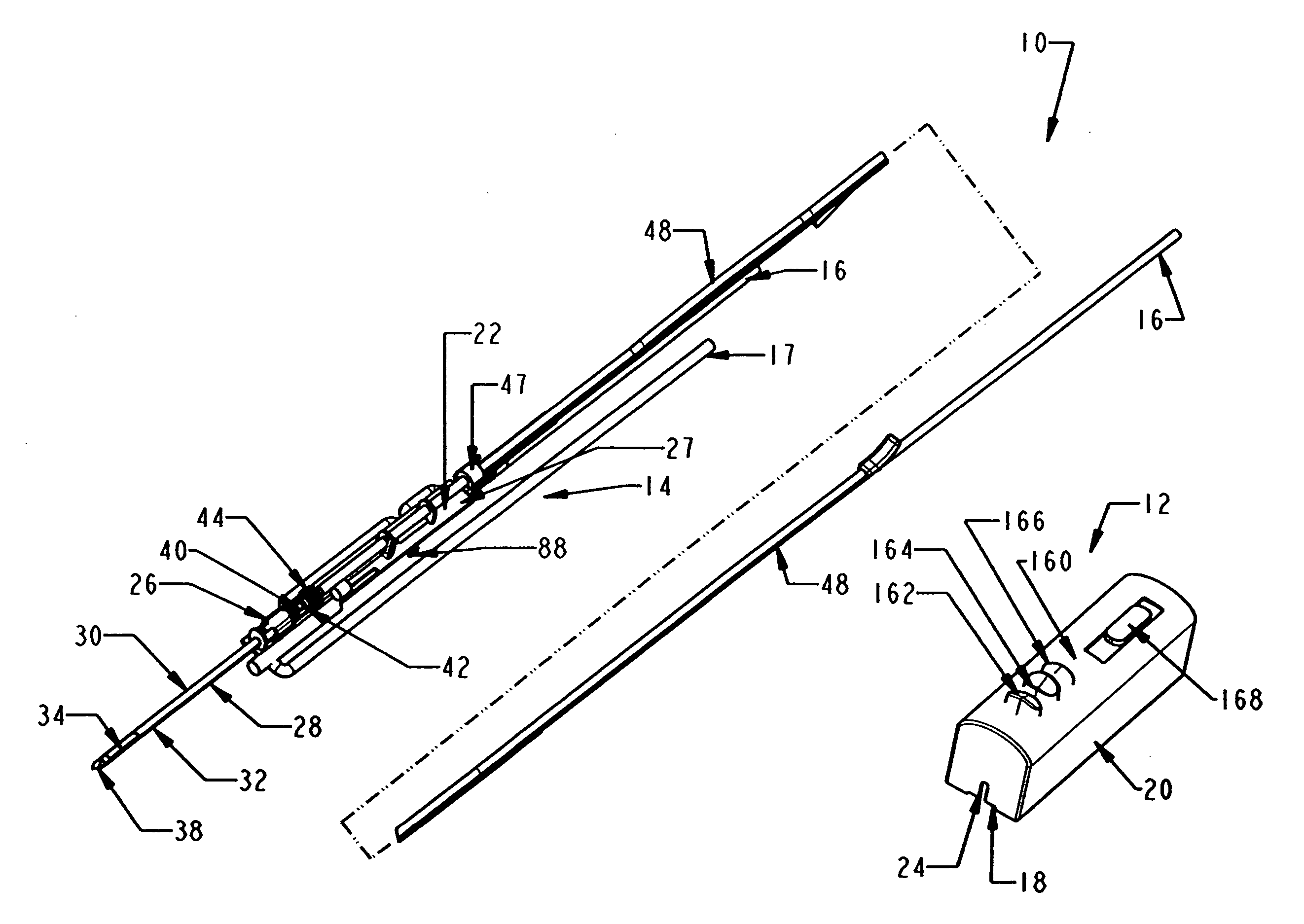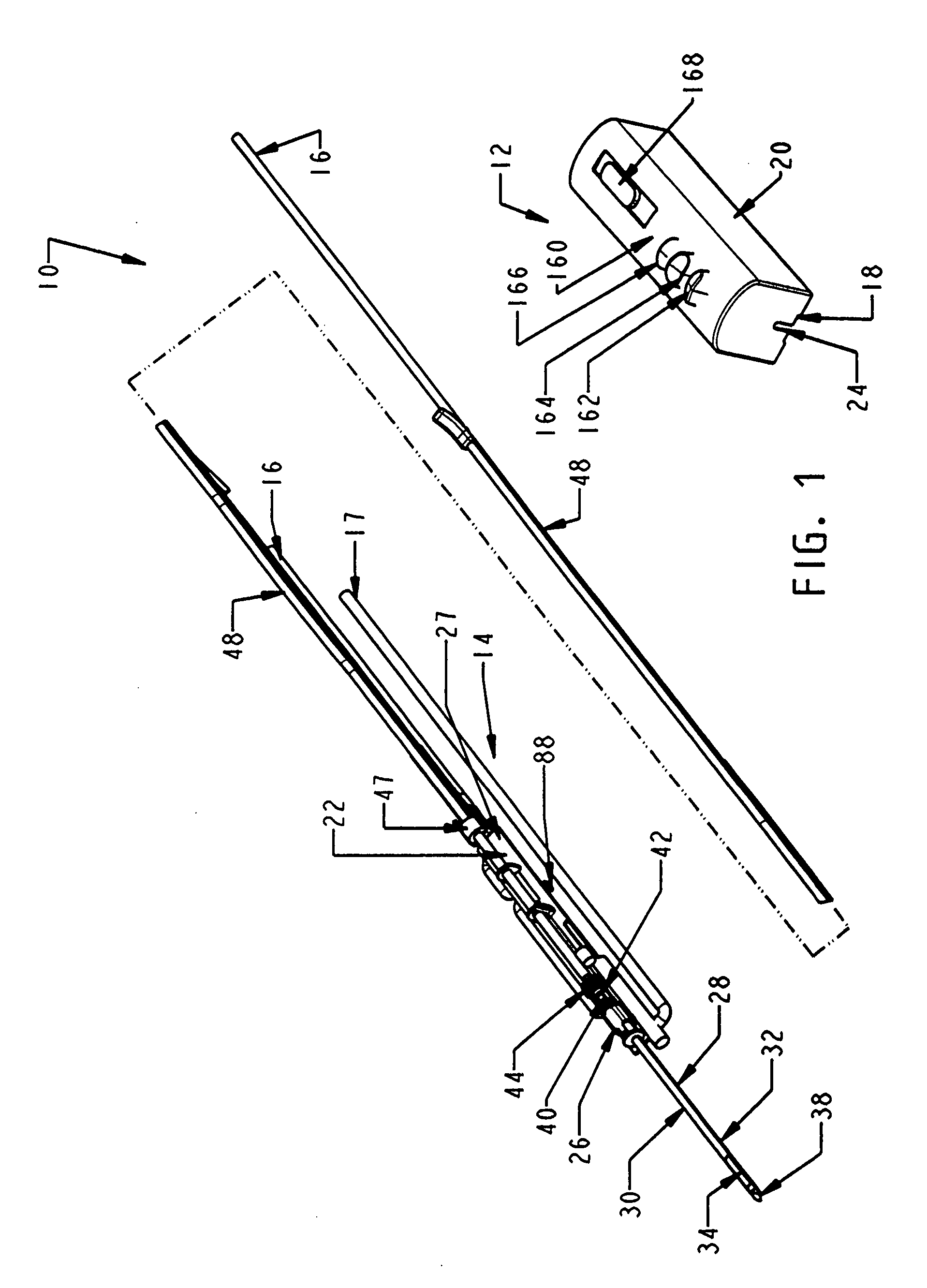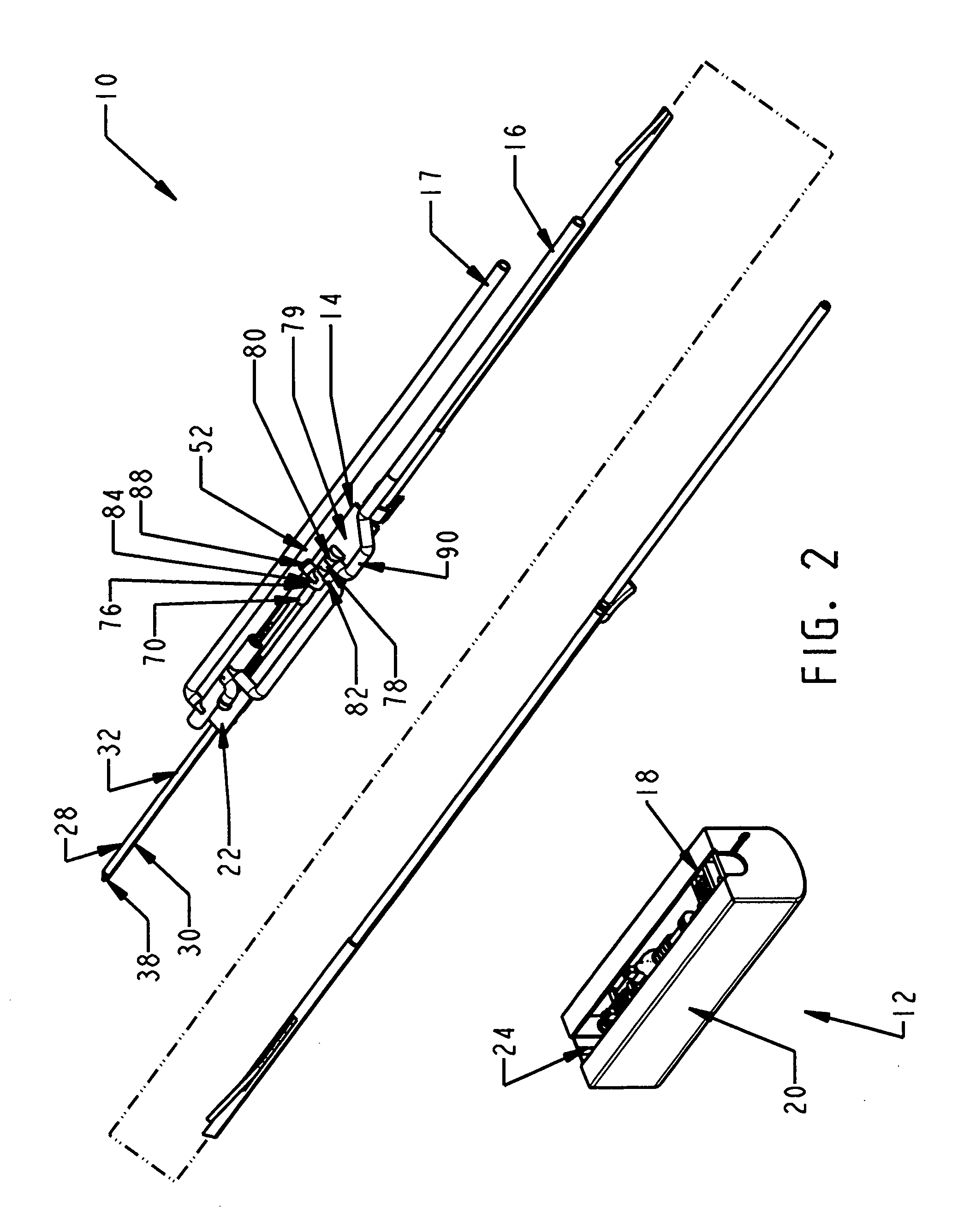Biopsy device with replaceable probe incorporating static vacuum source dual valve sample stacking retrieval and saline flush
a biopsy device and vacuum source technology, applied in the field of biopsy devices, can solve the problems of high cost and high level of trauma to the patient, open biopsy carries a relatively higher risk of infection and bleeding, and is difficult to read future mammograms
- Summary
- Abstract
- Description
- Claims
- Application Information
AI Technical Summary
Benefits of technology
Problems solved by technology
Method used
Image
Examples
Embodiment Construction
[0042] In FIGS. 1-2, a biopsy device 10 has a reusable hand piece 12 and a disposable probe 14 that enables economical taking of multiple percutaneous core biopsy samples by accessing a standard medical vacuum pump or wall-mounted vacuum access port (not shown) through an interfacing vacuum conduit 16. In addition, the biopsy device 10 advantageously incorporates a saline flush capability received from saline supply conduit 17. In the illustrative version, the reusable hand piece 12 is self-powered and suitable for use in conjunction with ultrasonic diagnostic imaging. The disposable probe 14 reduces the portion of biopsy device 10 that requires protective packaging to avoid contact with sharp surfaces and to keep it sterile prior to use. Further economy is accomplished by reducing the portion of the biopsy device 10 that is disposed as medical waste between uses. Movable components of the disposable probe 14 are advantageously locked until mounted in an access trough 18 formed in a...
PUM
 Login to View More
Login to View More Abstract
Description
Claims
Application Information
 Login to View More
Login to View More - R&D
- Intellectual Property
- Life Sciences
- Materials
- Tech Scout
- Unparalleled Data Quality
- Higher Quality Content
- 60% Fewer Hallucinations
Browse by: Latest US Patents, China's latest patents, Technical Efficacy Thesaurus, Application Domain, Technology Topic, Popular Technical Reports.
© 2025 PatSnap. All rights reserved.Legal|Privacy policy|Modern Slavery Act Transparency Statement|Sitemap|About US| Contact US: help@patsnap.com



